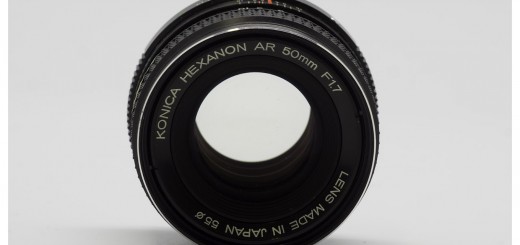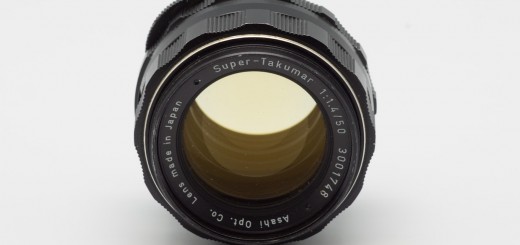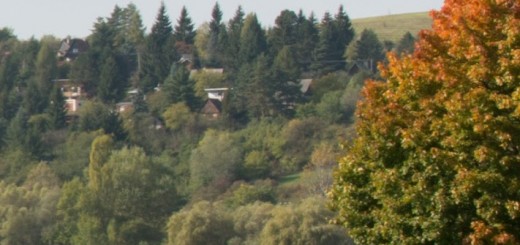Sharpening NEX 7 files
With every new camera, I am trying to get most out of the resolution, sometimes from the curiosity, sometimes on the purpose.
With 24 Mpx, NEX 7 is supposed to resolve lot of details, but due to the high pixel density on the APS-C sensor, noise might be a problem even at the base ISO.
Luckily, NEX 7 sensor is very well designed, so here is one of many possible ways to get most of its resolution.
For this test I choose a picture taken in rather difficult lighting conditions, with some blown highlights and some deep blacks.
In general – light, purity of the air, lens, proper exposure and focusing are the most important factors that will influence your result. For this image I did use NEX 7 with Leica Vario-Elmar R 35-70 f4 at 35mm f5.6 and 1/200s.
Conditions were not ideal, but not bad either – cloudy and some smog.
Here is the original image, cropped in LR
Cropping is the first thing I do (when I am lazy to compose correctly in camera, which is much more often that I would like to).
I than adjust white balance if necessary and get rid of LR presets for sharpening and noise reduction, by setting them to 0.
I than export image to Photoshop, as a Copy with Lightroom settings.
I decided to convert this particular image to Black and White as I didn’t like its colors.
There is lot of ways to do that, plenty of good tutorials can be found on web. I used adjustment layer for B&W in Photoshop.
As the picture is rather underexposed, I selected “lighter” preset, from preset menu and than fine tuned conversion, with a color sliders.
I was kind of happy with the result, so I flattened the image, because I use to make most of my retouching in the LAB mode. You can first make conversion to LAB and than convert to Black And White, if you want to keep your adjustments layer.
Next step for me, is to adjust shadows and highlights and/or overall tonality.
As there is no adjustment layer for Shadows and Highlights, I copied my background layer first. Drag your background layer to the small empty layer icon in the layer palette.
Chose Layer – layer adjustments – shadows and highlights.
You can play with the settings in dedicated window, and usually get good results without further steps, but in such a contrast scene, I needed to do some masking.
I suppose, most of you, who will read, will know how to do masking, but anyway, here is short description.
I accepted standard value of 0 highlights and shadows at 35. Usually this is too much, but because I will work with mask it doesn’t really matter.
To create layer mask, click on the layer mask icon in the layer palette, while desired layer is selected.
At the first glance nothing happened, as the mask is white and the effect is overlaying whole image. Depending on the image and areas that you want to correct, you can either hide the effect using the black color and painting in the mask, or invert the mask (it becomes black and no effect is visible) and paint with the white, to reveal the effect.
I wanted to add some more light in the shadows, so I choose second option.
To invert the mask press Ctrl + I (PC). Mask now gets black and the whole effect disappeared. Check if colors in the color icon on the left, are at standard black and white, if not, press D.
Selected soft brush at 10%-20% opacity (or more if you like) and size – relative to the portion of the image that you want to affect (I want to lighten mainly left side of the train and station roof). If you make mistake and lighten too much, don’t panic.
Switch the color to the black and paint over. It works like a brush for the mistake. (If you are painting in the white mask, to repair mistakes, choose white).
Before you start with painting, be sure that in the layer palette, related mask is selected (click on it).
When you are happy with the result, you can proceed to sharpening. Don’t forget, that you can also adjust your shadows/highlight overall opacity layer, to end-up, with desired result.
You can now either merge the layers or press Alt + Ctrl + Shift + E to stamp the new layer over existing ones. I like this method better, as if I want to get back to change some settings I can still do so. If you have more layers, you can choose desired ones, copy only those, and merge them. It is the same thing as short cut, but that way you can select only layers that you want to merge into new one.
The main idea of this method, is to sharpen edges – part of the image with highest contrast, while not affecting flat surfaces, where extensive sharpening will cause blotching and loss of detail.
Click on the channels tab.
Click Ctrl + A to select whole image. Than click Ctrl + C to copy it.
Next, click on the empty channel bellow, (on the channel palette) to create new Alpha 1 channel, that will appear as a black filling.
It will stay selected, while other channels will be deselected. That’s fine. Now press Ctrl + V to copy your image into empty channel.
Go to the filter menu and choose Stylize – Find Edges.
Here is what you should get.
With your Alpha 1 channel (you can rename it if you like) still selected, press Ctrl + M to open the curves palette. (you can work also with Ctrl + L – levels, if you like that more)
In the curves palette, you want to get as much contrast on the edges as you can, while preserving their shape and keep the flat areas white.
That needs some adjustments, so don’t be scared. You like Black and White drawings? That is what you are creating now.
Check on the image for my values, but yours might vary. There is no overall rule, so you need to try and practice (me too of course). Click OK.
Edges will now be sharp once we use sharpening, but their transition too, which is not good.
So we have to add some blur. Keep your channel selected, go to the Filters menu, select Blur – Gaussian Blur and set the radius between 2-3. You can experiment with that, but for this small tutorial, let’s set it on 2.5. Click OK.
After doing so, press once more Ctrl + M (or Ctrl + L, whatever suits you better) and increase the contrast even more. Click OK.
Click now on the first channel in the channel palette to deselect the Alpha 1 and select all others channels. After having all channels (except Alpha 1) selected, go to the Selection menu – Load selection and choose Alpha 1. Keep all settings as they are and click OK.
All this work for some crazy selection that looks like this?
Well, there are easier methods for sure… We have few more steps to do…
First, Inverse the selection. Go to the Select menu and choose – Inverse. (There is more efficient way to invert the selection, but let’s keep it simple. Well, almost simple…) Click OK.
Now, go to the View Menu and choose Show – and click on “Selection Edges” to deselect it.
Funny thing is, that you will end with the same picture that you started many steps above. If you kept reading till here, I believe you deserve reward.
Go to the Filter Menu, Choose Sharpen – Unsharp Mask (you can play with other sharpening methods if you like, and if you still have the will and power).
Once the Unsharp mask window opens, and you move the slider Amount to the right end, your “Pro” sharping is done 🙂 All magic is revealed.
You can set the amount as much as you like, NEX 7 file, due to the high resolution, will be quite tolerant.
I went as far as 205 in this case, but usually good value is between 100-200. In some cases you can go up to 250. Keep other settings as they are (or play with them if you like) Radius 1 and Threshold 1 or 0. Click OK.
That’s it. If you want to see the difference select Zoom Tool, then select Actual Pixels above and click between the layers.
Here is the difference in this case. I will let you guess what is before and what after 🙂
As you can see, we lifted up the contrast, and pixel sharpness in the dark area made of contrast edges in this sample, while no noise or artifacts at all were added to the bright area.
It is good to notice, that creating the mask while in Alpha channel, allows you to correct it with the brush, in other words to fine tune it.
For the final result it is good to know, what you will do with your image.
You might want to re-sample image to the desired size by choosing appropriate re-sampling method in Photoshop’s image size menu.
To end this small tutorial, here are down-sampled (and better corrected for curves and tonality) results to the size of 1920 x1280 px at 72 dpi.
The first one is our original image corrected to Black and White, before we started with the sharpening.
After sharpening
Nice thing about this method is that you can use your Alpha 1 channel also for the noise reduction. You will have to revert it and slightly fine tune it, but if it is already there, why not to use it.
Finally, if you are going to print, you might consider some really extreme sharpening by enhancing Tonal Contrast. This can be done in a few ways, the easiest is to use Tonal Contrast from The Collor Effex by Nik Software, but that is for another tutorial.
Sample shown here is extreme, you should be more careful than me.
Enjoy and leave some comments if you like…











































“Sahrpening NEX 7 files”
You have typo.
Otherwise I dont have anything to say, cause I didnt read that wall of text, its seriously too long and..
(and Im just kidding :D)
Its very interesting way to sharpen things, might try it someday, tho Im not sure increasing contrast on edges only is good way, usually I rather prefer selective sharpening by masking flat areas (sky). But its matter of taste I guess and its positive, cause at least we all dont end with same looking photos. 😀
Nice article btw.
Thanks Crowin, I already re-type at least that one in the Title 🙂
Masking flat areas is in fact opposite of enhancing edge areas 🙂
Seriously, there are many ways for sharpening.
This method works especially well in high contrast scenes and architecture.
Very interesting technique! Thank you for sharing.
I really like the rest of the blog, too.